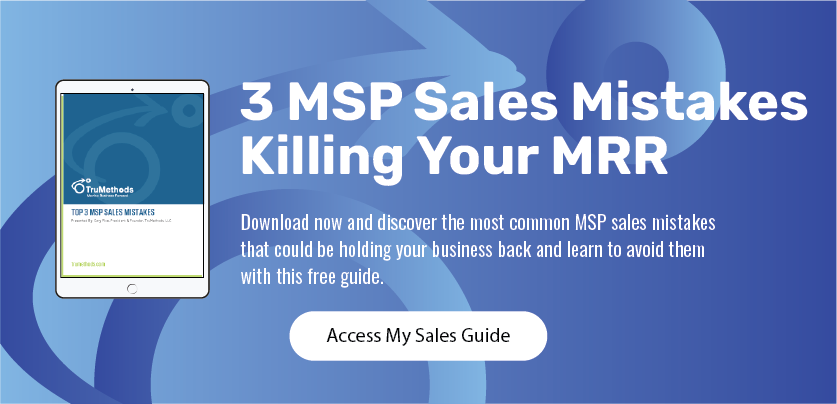Are you consistently finding that your sales numbers aren’t where you want them to be? Struggling to close deals? Regularly losing out to competitors? Monthly recurring revenue is a necessity for every MSP, but many lack the experience or time to focus on sales.
You do have the power to generate more leads. That’s a fact. You just need the right approach to make it happen.
The MSP sales process is a complex one, but we’ve got the secrets to help you revolutionize your sales approach today.
Secret #1: Differentiate Yourself
There are thousands of MSPs doing exactly what you do. So, what makes your company stand out? In MSP sales, there’s not a whole lot that varies from one service offering to another. Every provider features the same basic deliverables, including:
- Centralized services (automation and cloud services)
- Reactive support
- Technology consulting (vCIO)
- Professional services
But, your clients don’t want the details of the services you offer. They’re more interested in how your IT services impact their business. To achieve your MSP sales goals, take action to differentiate your IT service offering from your competition in the following two steps:
Step 1: Add network administration (vCIO) to your repertoire of IT services. There are so many reasons to have a dedicated vCIO on staff, but chief among them is the ability to be proactive. The vCIO adds value to the services you offer through standardization and optimization of your client’s IT systems.
Step 2: Start talking about your MSP Super Power. This is the unique value you bring to the table. It’s how your processes work together to improve each client’s business operations. What does your company do better than all the others? Show how your processes are the solution to your clients problems.
Secret #2: Sell Service, Not Technology
Any MSP that a prospect randomly finds online could offer seemingly impressive technology features. But, your clients aren’t necessarily in the market for technology. They’re in the market for IT services that allow their business to operate better.
You may talk the tech lingo, but your clients don’t. They speak profits, costs, risk and efficiency. Refocus your MSP sales pitch on the end result. How does your technology help your clients’ businesses run smoothly? They want to know that they won’t be hindered by unexpected IT system downtime or crippled by outrageous costs for IT services.
Instead of focusing on specific aspects of the technology you offer, highlight how your services increase productivity, keep costs manageable and mitigate risk for your clients.
Secret #3: Get Focused On MSP Sales
There’s a huge difference between being interested in sales and being focused on it. It’s easy to get bogged down in daily operations – closing IT tickets, managing employees, interacting with clients. But, don’t let sales fall through the cracks.
Where are you falling short with your sales focus? Ask yourself these three questions to evaluate your MSP sales approach.
Have we dedicated resources? Are you even spending time on MSP sales? To be successful in this area, you have to dedicate resources to it. No objective in your business has been achieved without allocating time or manpower to it. Even if you can’t afford to hire an entire sales team now, dedicate yourself and your time to the MSP sales process. It’s too important to ignore.
How many FTAs do we need? To meet your sales goals, you need FTAs (first-time appointments) in the books. How many potential clients should you be meeting with to get your monthly recurring revenue up? The following factors help you determine the number of potential clients you should be meeting with each week:
- Average engagement size
- Close rate
- Monthly fee you’re targeting
Who is accountable? You must have an accountability system in place. By monitoring your MSP sales efforts, you’ll be able to pinpoint what’s working and what’s not. Start by conducting weekly sales meetings to evaluate how you’re doing. These may be small in the beginning, but as your business grows, your meetings should, too. Then, outline your sales process in a playbook. Sometimes it’s difficult to pinpoint exactly where things are falling apart until you put it down on paper.


